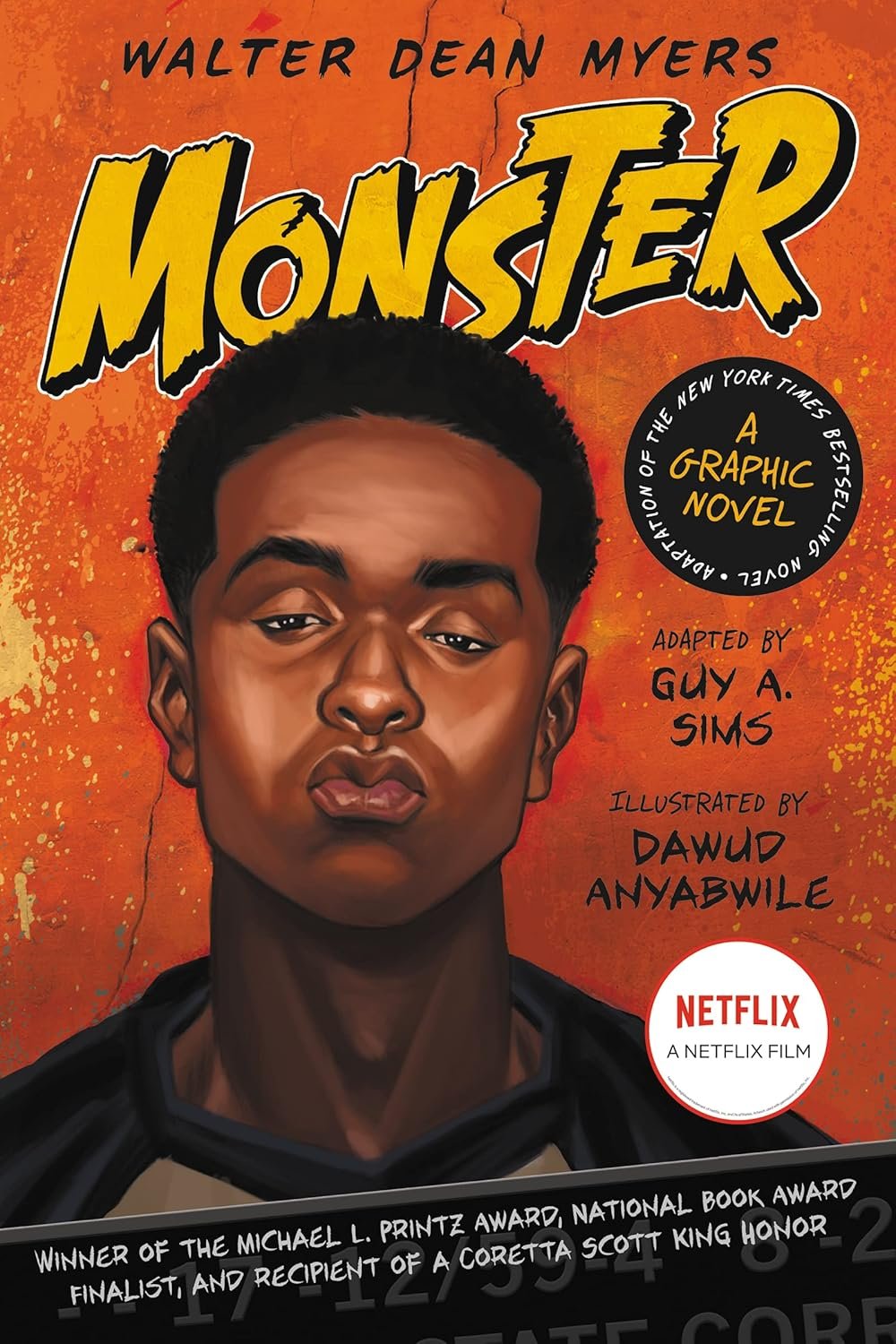A Dive into “Monster: A Graphic Novel” – A Reflection
When I first picked up Monster: A Graphic Novel, I was drawn not only by its striking black-and-white illustrations but also by the weighty legacy of Walter Dean Myers. As a somewhat reluctant reader growing up, Myers’s works felt like an open door to a world of important conversations about identity, justice, and the all-too-real consequences of choices. This graphic novel adaptation, illustrated by Dawud Anyabwile and written by Guy A. Sims, promised to encapsulate those very conversations while engaging a new audience through the dynamic graphic novel format.
At its core, Monster is a haunting coming-of-age story that follows Steve Harmon, a teenager caught in the throes of a murder trial. From the moment you start reading, you’re thrust into Steve’s tumultuous world, confined within the walls of juvenile detention. The creativity of presenting his experiences as a screenplay is both innovative and poignant—Steve isn’t just a victim of circumstance; he navigates his narrative with keen introspection. His reflections lay bare the ways that a single defining moment can ripple through a young person’s life like a stone thrown into a still pond.
One of the standout elements for me was how the graphic format amplifies the emotional weight of the story. The monochrome artwork, powerful and evocative, reflects the stark reality of Steve’s situation. Moments of tension and fear pulse through the pages, while the screenplay structure invites readers into Steve’s imagination—a sometimes fantastical escape from his grim reality. This duality enhances the impact of the narrative; readers engage with both Steve’s harsh truths and his hopeful dream of filmmaking.
The themes of identity, loyalty, and the critical question of what it means to "be a man" flow throughout the novel, echoing the voices of many young people today. It raises essential questions: What does society see when they look at a young Black man? What stories do we allow ourselves to believe? There’s a quote from Steve that resonated with me: “I think of myself as a monster.” It’s a powerful reminder of how labels can shape one’s reality, and it left me reflecting on the importance of seeing and acknowledging the humanity in everyone.
Readers looking for an authentic exploration of adolescence will find a companion in Steve. The narrative pacing kept me locked in; every page turn unfolded another layer of his struggles and hopes, making it difficult to set the book down. The choice to adapt such a weighty subject matter into a graphic novel is not only audacious but necessary; it invites even those who might shy away from typical prose to engage with profound issues.
Monster: A Graphic Novel is ideal for teens, educators, and anyone interested in stories that confront uncomfortable truths about justice and race. It serves as a reminder of our shared humanity and the ways in which individuals can be defined (or misdefined) by society.
As I closed the book, I found myself reflecting on how powerful stories have the ability to resonate across generations. This gripping adaptation of Myers’s classic left me not just entertained, but deeply moved and inspired to continue exploring the complexities of identity and narrative. If you haven’t yet picked up this adaptation, I can assure you it’s a captivating way to dive into meaningful conversations about life, choices, and the world we live in.







